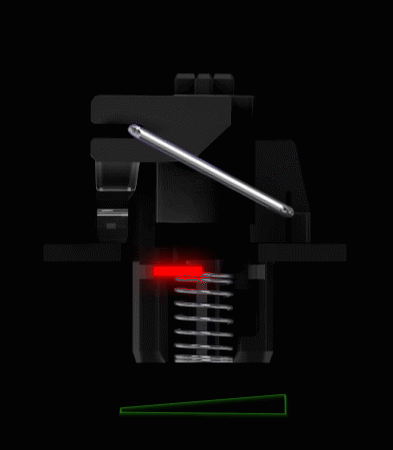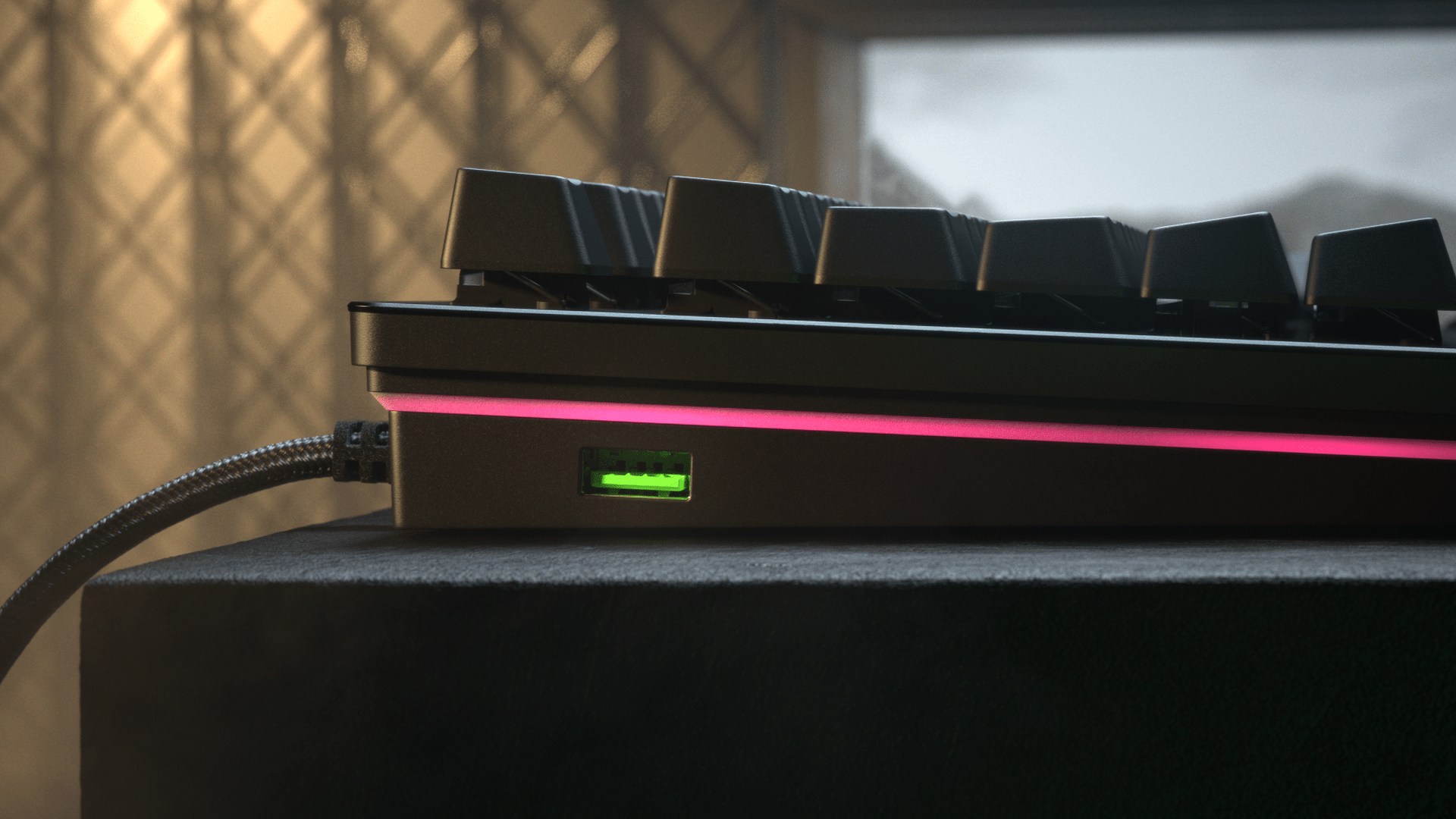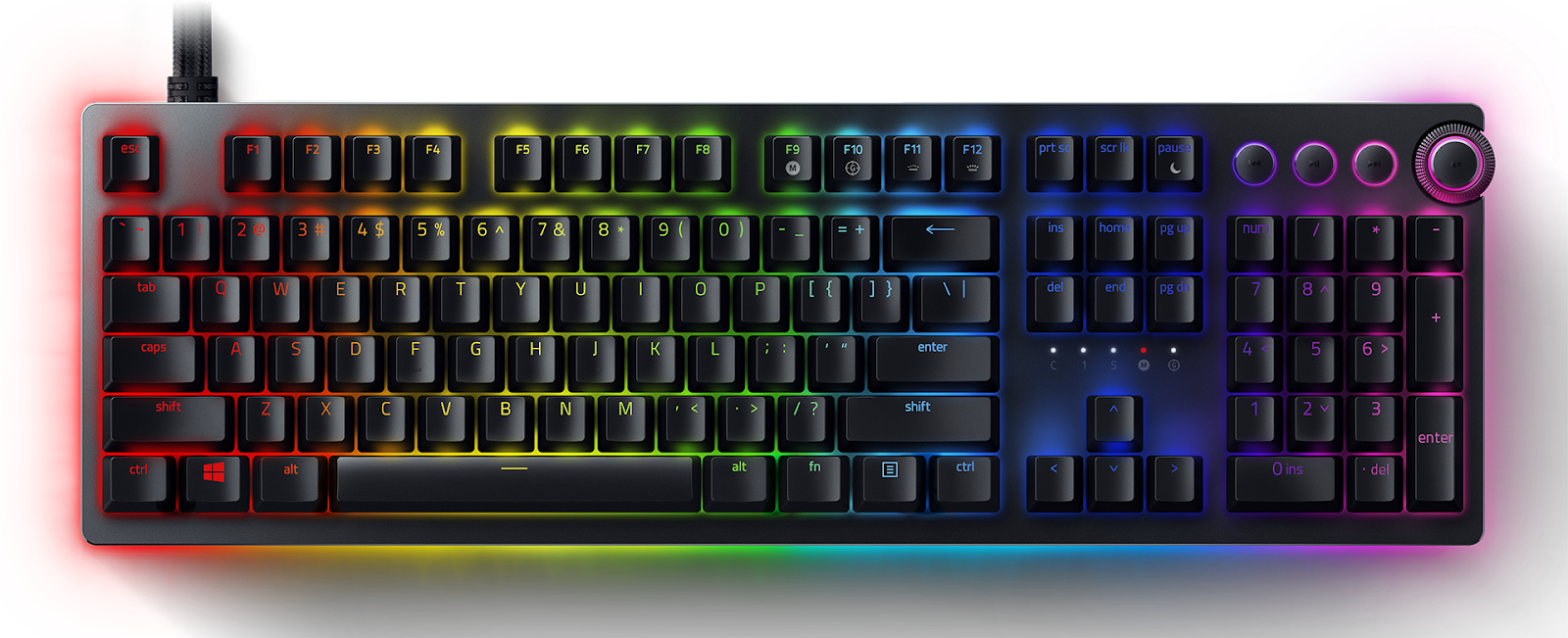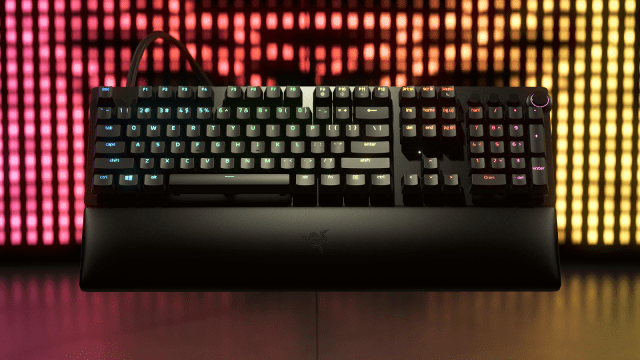Most mechanical keyboard switches have two states, on or off. The switches inside Razer’s new $380 Huntsman V2 Analogue keyboard sense degrees of motion, allowing users to set their own actuation depth, apply degrees of pressure like with an analogue joystick, or even have one key perform multiple functions depending on how far it’s pressed.
One of Razer’s most popular keyboards is now slightly better and very different from traditional models. Using the same analogue switch technology similar to that found in the Wooting One keyboard I reviewed back in 2018, the Huntsman V2 Analogue allows for a degree of control unheard of in most mainstream mechanicals. Traditional keyboard switches trigger when they are pressed to a certain depth. Razer’s analogue optical switch measures a beam of light as it passes through a lens at the base of the switch stem. As the switch lowers, the lens opens wider, letting more light through. By measuring the amount of light, the keyboard knows how far the key is pressed, and can use that data to do cool things.

One example that comes up every time analogue keyboard switches are mentioned is the gas pedal of a car in a racing game. A standard keyboard switch offers no degree of fine control. Either you’re pressing the gas, or you’re not. An analogue switch can be pressed a little to give the car a little gas, or it can be pressed all the way down in order to floor it. Your WASD keys can not only determine which way you’re running, but how fast you’re running. (One catch: The Huntsman’s analogue key support works by simulating gamepad button presses. If a game doesn’t support simultaneous gamepad and mouse/keyboard input, as a few do not, you won’t be able to use the keyboard’s analogue features alongside a mouse.)
The Razer Huntsman V2 Analogue also allows you to set your own articulation depth. That’s how far the key has to be pressed down in order to register as a press. If you’ve got a light touch you can set the depth more shallow, requiring less pressure to type. If you are heavy-handed like me, a deeper depth can keep you from accidentally firing the wrong keys as your sausage fingers attempt to dance across the keyboard. Controlled through Razer’s Synapse software, every key on the keyboard can be set individually, resulting in a keyboard whose sensitivity you can completely configure to suit your particular typing and playing needs.

Even cooler, you can set a key to activate at two different depths. This function can be used to streamline in-game actions. You can set a single key to, say, equip a grenade with a light touch, or throw it with a harder press. For shooters with a reloading sweet spot you can press lightly to start reloading, then harder to hit the right spot on the metre. Or set a button that can target a specific player and then cast a healing spell. Sure, all of these things can be achievable with macros, but the addition of analogue functionality adds an additional layer of control.
It’s nice to see such a major player in the gaming peripherals market embrace this otherwise niche technology. If anything could get lapsed keyboard-and-mouse gamers to drop their gamepads and come on home, it’s analogue keyboard switches.

It helps that these particular switches come on one of Razer’s best keyboards. The new Huntsman is outfitted with all the bells and whistles of the older models like Chroma lighting, fully-programmable keys, onboard configuration profiles for gamers on the go, thick braided fibre cable, and a very handy USB 3.0 passthrough. The switches are topped with lovely textured doubleshot PBT plastic keycaps. The top plate is aluminium, giving the keyboard a nice heft. The included magnetic wrist rest is not only comfortable, it also extends the keyboard’s underglow lighting when attached.
And it wouldn’t be a modern gaming keyboard without the damn multifunction dial in the top-right. I do not hate the dial, nor am I a fan. I do not know why a keyboard needs a dial. I use it as a volume control now and then, when I haven’t forgotten it is there. I have convinced myself it only exists because dials look kind of cool and retro-techy.

If you care nothing about analogue control there’s no reason to purchase this particular Huntsman model. At $380 it’s definitely on the pricier side of Razer’s typing gear. If you are interested in a keyboard with definable degrees of switch depression, the Razer Huntsman V2 Analogue is the perfect piece of tech to press.

Leave a Reply